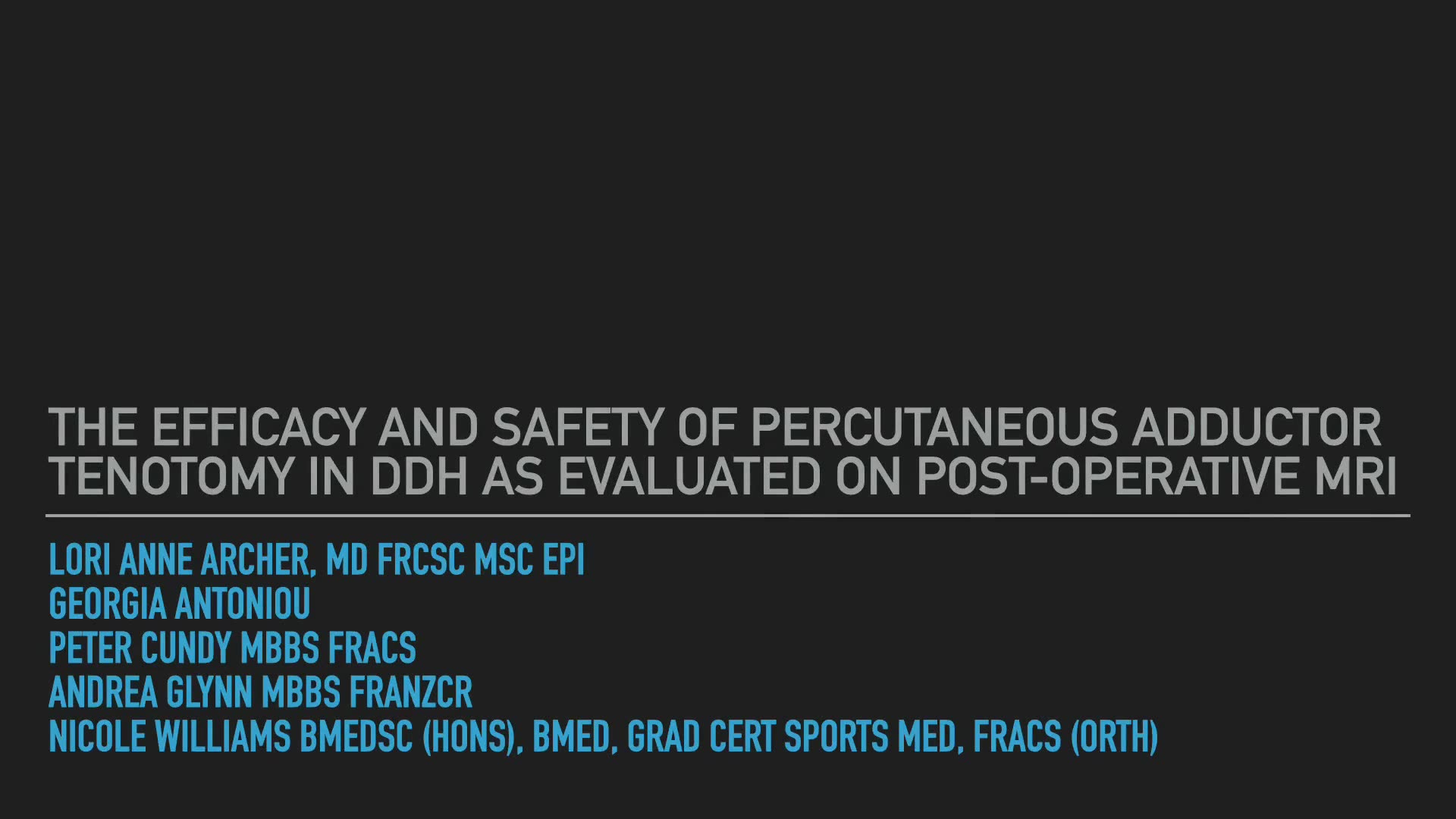Please login to view this media

- Talk
- 15/06/2021
- Canada
The Efficacy and Safety of Percutaneous Adductor Tenotomy in DDH as Evaluated on Post-Operative MRI
Description
The video starts with Lori Anne Archer welcoming viewers to a discussion on the effectiveness and safety of percutaneous adductor tenotomy in treating developmental dysplasia of the hip (DDH), as evaluated through postoperative MRI scans. She acknowledges the procedure's aim to address barriers to hip reduction and the potential risks, particularly avascular necrosis (AVN).
The presentation outlines a study designed to assess the selectivity and safety of this technique, alongside a secondary goal of examining pediatric adductor anatomy in the unique postoperative position of patients immobilized in a hip spica cast. Following ethics approval, a retrospective case series involving 38 patients and 41 hips was conducted, with data meticulously collected on demographics and intraoperative details.
The findings reveal that the majority of the study population were females, predominantly presenting late for treatment, and most received a closed reduction. MRI evaluations identified a concerning trend of injuries to the adductor brevis, with high rates of interobserver agreement among pediatric orthopedic surgeons but significant discrepancies when involving radiologists. Interestingly, the results suggest that percutaneous adductor tenotomy did not consistently achieve selective longus tenotomy, raising concerns about inadvertent injuries and implications for nerve integrity.
Despite the study's limitations, including a small sample size and visual injury assessment methods, the findings facilitate new discussions about surgical techniques for DDH and the importance of enhancing collaboration between orthopedic and radiology teams. Archer concludes by emphasizing the necessity for better interdisciplinary communication to optimize patient outcomes.